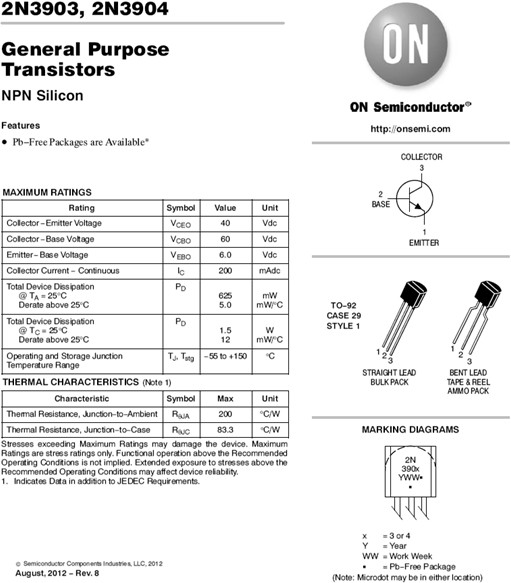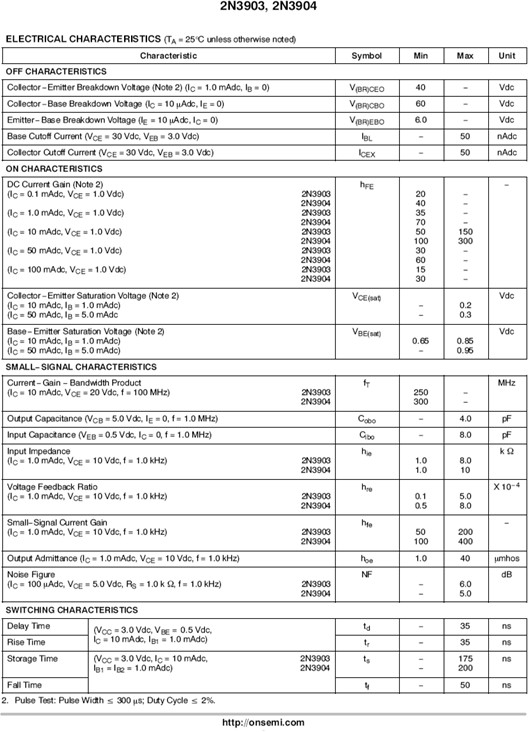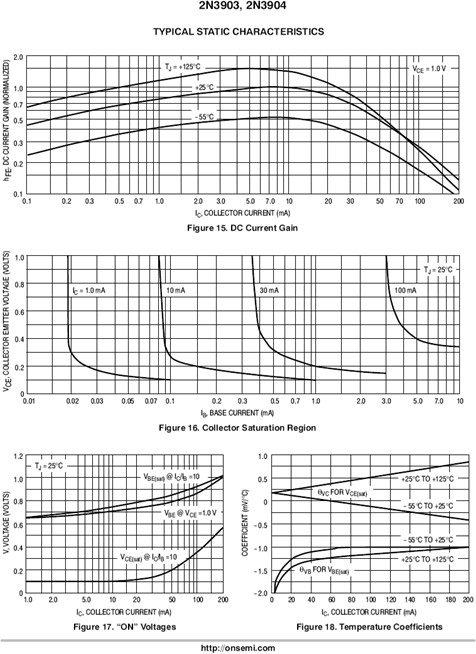3.4 BJT Data Sheet Interpretation
The data sheet for a common NPN transistor, the 2N3904, is shown in Figure 3.4.1. This model is available from several different manufacturers. First off, note the case style. This a TO-92 plastic case for through-hole mounting and is commonly used for small signal transistors. Under the maximums we find the device has a maximum power dissipation of 625 mW in free air (ambient temperature of 25∘ C), a maximum collector current of 200 mA and a maximum collector-emitter voltage of 40 V. Obviously, the device cannot withstand maximum current and voltage simultaneously.

In Figure 3.4.1b we find a variety of characteristics including nominal values for β (listed here as hFE ) under various conditions. At particularly small or large collector currents β tends to drop off. Also, note the wide 3:1 variance at 10 mA. Perhaps more illustrative are the graphs from the third page, Figure 3.4.1c.

The upper-most graph depicts the variation of β with both collector current and temperature. The normalized β is plotted on the vertical axis. That is, this is not the expected value but is a ratio used to compare β under varying conditions.

For example, at room temperature and 10 mA, the normalized value is 1.0. The second page indicated a range of 100 to 300 for the 2N3904’s β under these conditions. Let’s say we measure one particular transistor to have a β of 200. If we were to operate this transistor at a lower current, say 0.2 mA, the β would drop. From the graph, the normalized β value at 0.2 mA and 25∘ C is 0.7. Therefore, the β under these conditions would be 0.7/1.0 200, or 140. The graph also shows that, generally speaking, β tends to increase with increasing temperature.
The middle graph plots the collector-emitter saturation voltage, or VCE(sat) , for various current conditions. This is an important parameter when dealing with transistor switching circuits. We shall refer back to this graph a little later in this chapter.

